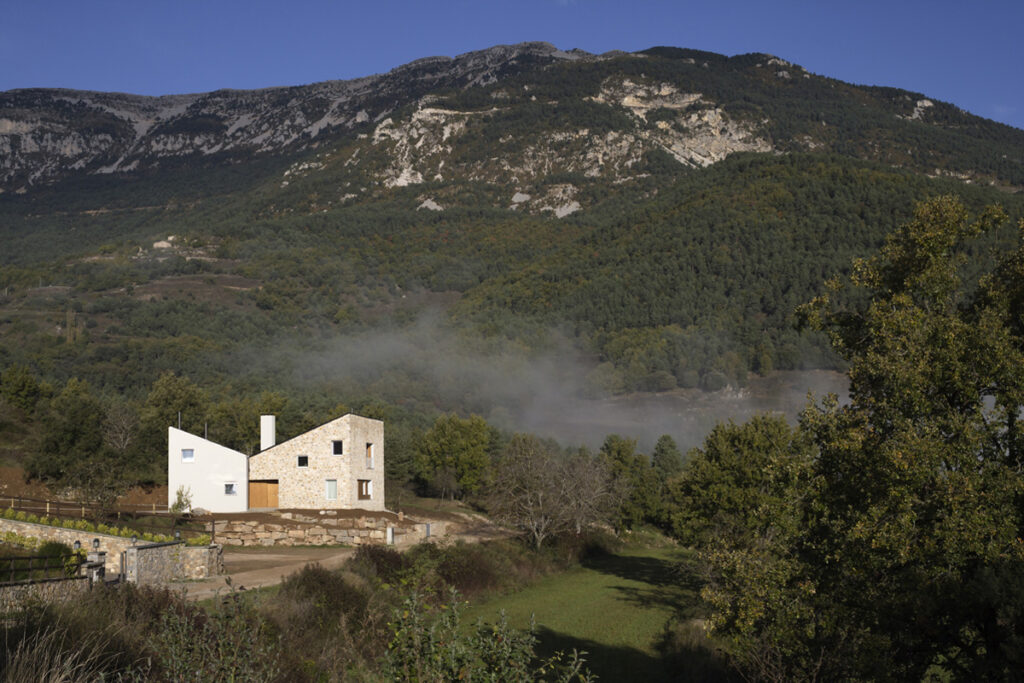
Casa Sant Llorenç / Liebman Villavecchia Arquitectos
The plot located on the outskirts of the town and with few nearby buildings was initially farmland and meadow and developed into two terraces: the upper one, which occupied most of the plot and sloped gently from elevation 965 to an old terrace, and the lower one adjoining a private road at elevation 961. The longest side of the plot, a gentle arch of about 50 meters, faced the unconsolidated street Carrer del Pinyer with a northwest orientation, being, however, natural access from a private road.
Architects: Liebman Villavecchia Arquitectos
Location: Sant Llorenç de Morunys, Spain
Photography: Lourdes Jansana

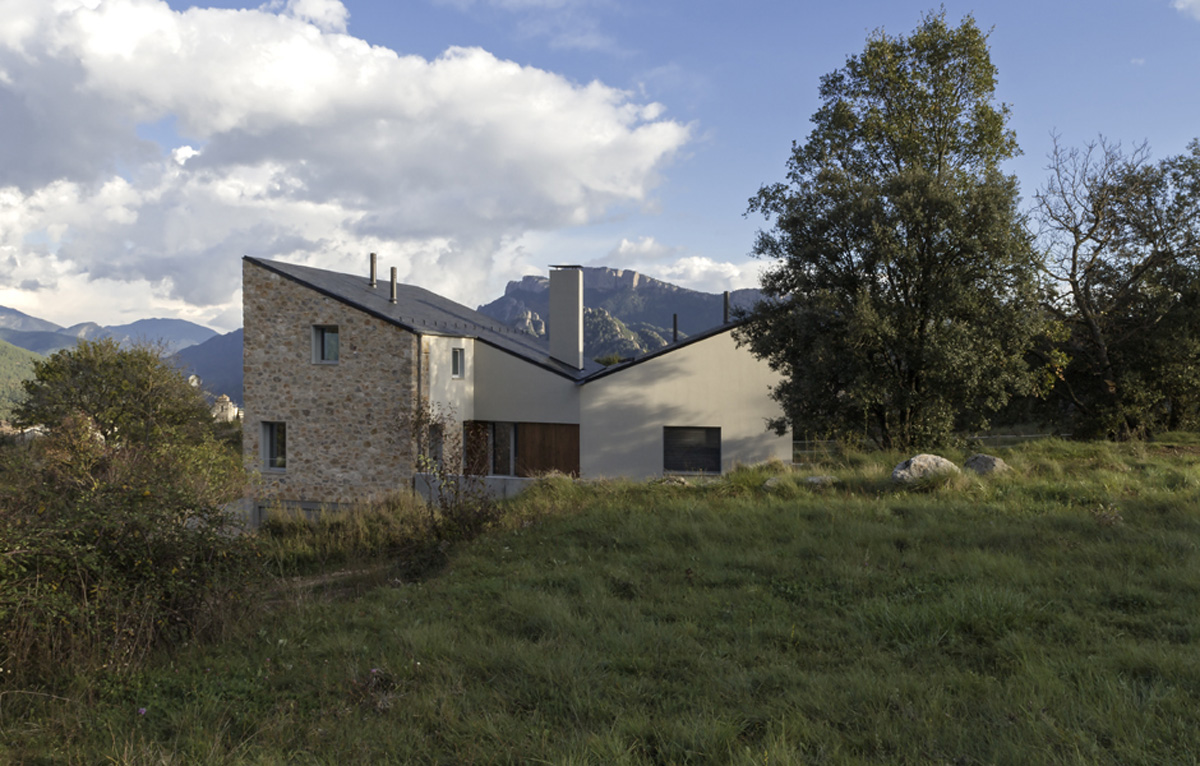
The implementation of the house is defined by the obligatory separation of boundaries whose resulting gauge, in the shape of a wedge, was barely 2.5 meters at one of its ends. The four-sided house, made up of a basement, ground floor, and first floor, takes advantage of the widest part of the building area. Two volumes of 5.80×11.50 each, embedded in the topography of the place, displaced and rotated one with respect to the other, are encompassed under a single sloping roof — of flat slate tiles — with two slopes, replacing the traditional central ridge by a large valley.
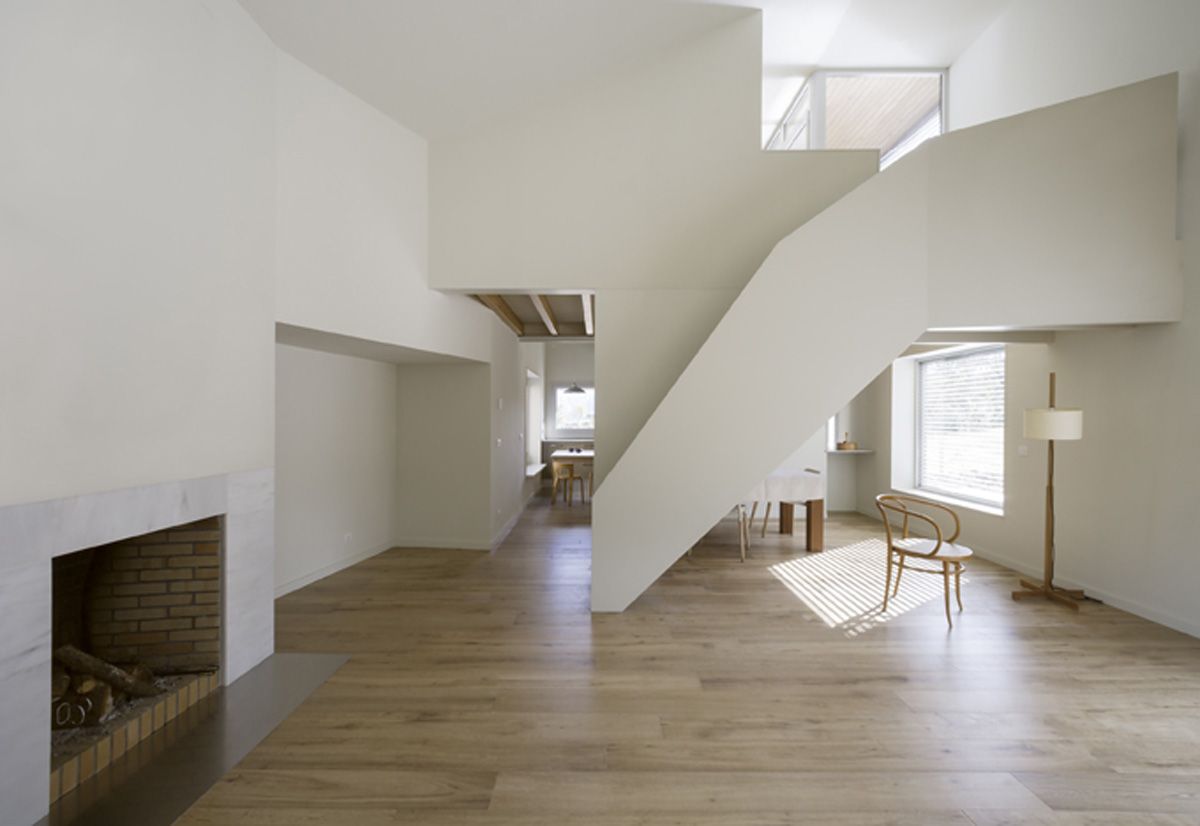
This morphology represents a novel bet within the local environment, which not only confers formal but also practical interest since it lengthens the amount of sunlight on the southeast and southwest facades considerably and facilitates the use of rainwater for irrigation.
Inspiration from architects
By having more height on the northeast and southwest facades, it has been possible to locate two covered terraces or “loggias” on the first floor, thus benefiting from the splendid mountain views on one side and the capture of natural light on the other.
The interior layout responds both to a sought-after wealth of spaces and to the programmatic needs of the clients, a married couple with two daughters. The domestic space is organized around a generous hall that visually connects the ground floor with the first floor and serves as a link for both horizontal and vertical circulation. Under the axis of the valley, there is access to the most emblematic part of the house, the two-story living room dominated by a fireplace and a sculptural staircase that leads to the dining room, the kitchen, and the mezzanine-study that, taking advantage of the great height, is located above the latter. From the central hall, there is also access to the bedroom area. All the rooms enjoy natural lighting from at least two orientations and open onto exterior spaces with a different characters. The production of domestic hot water and underfloor heating is achieved by harnessing geothermal energy.
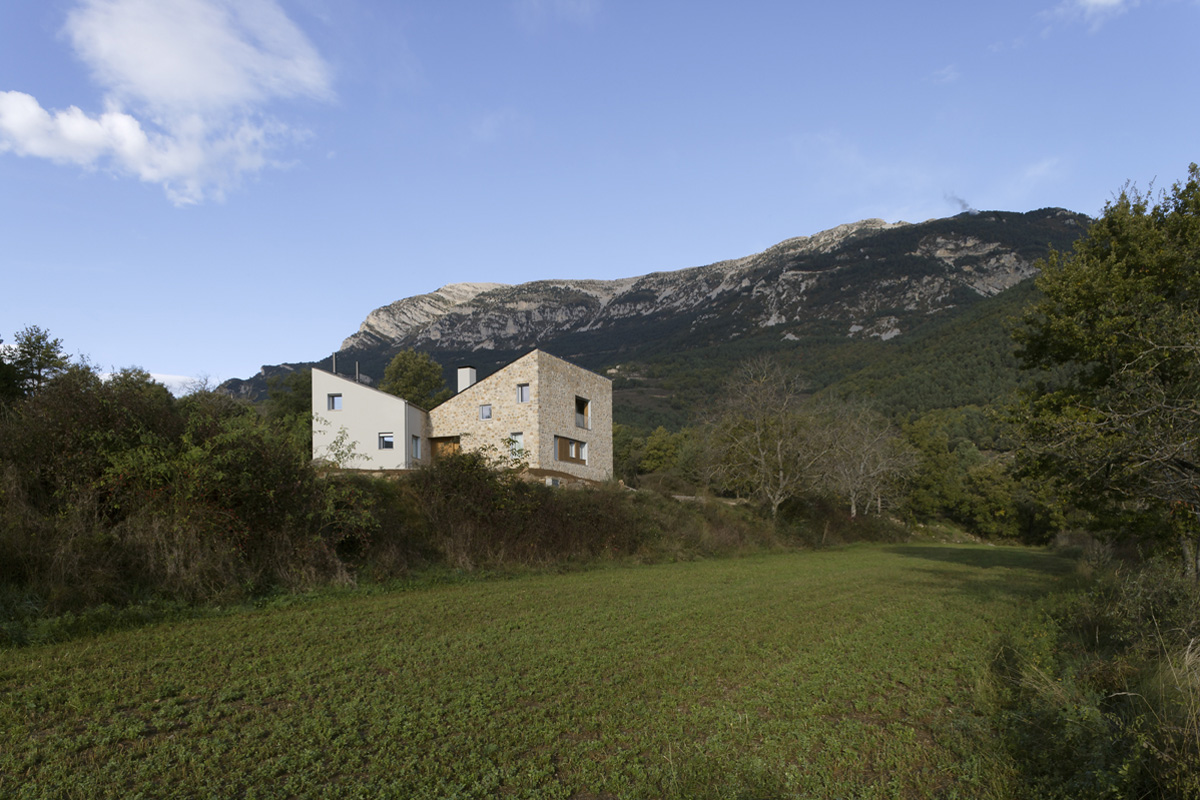
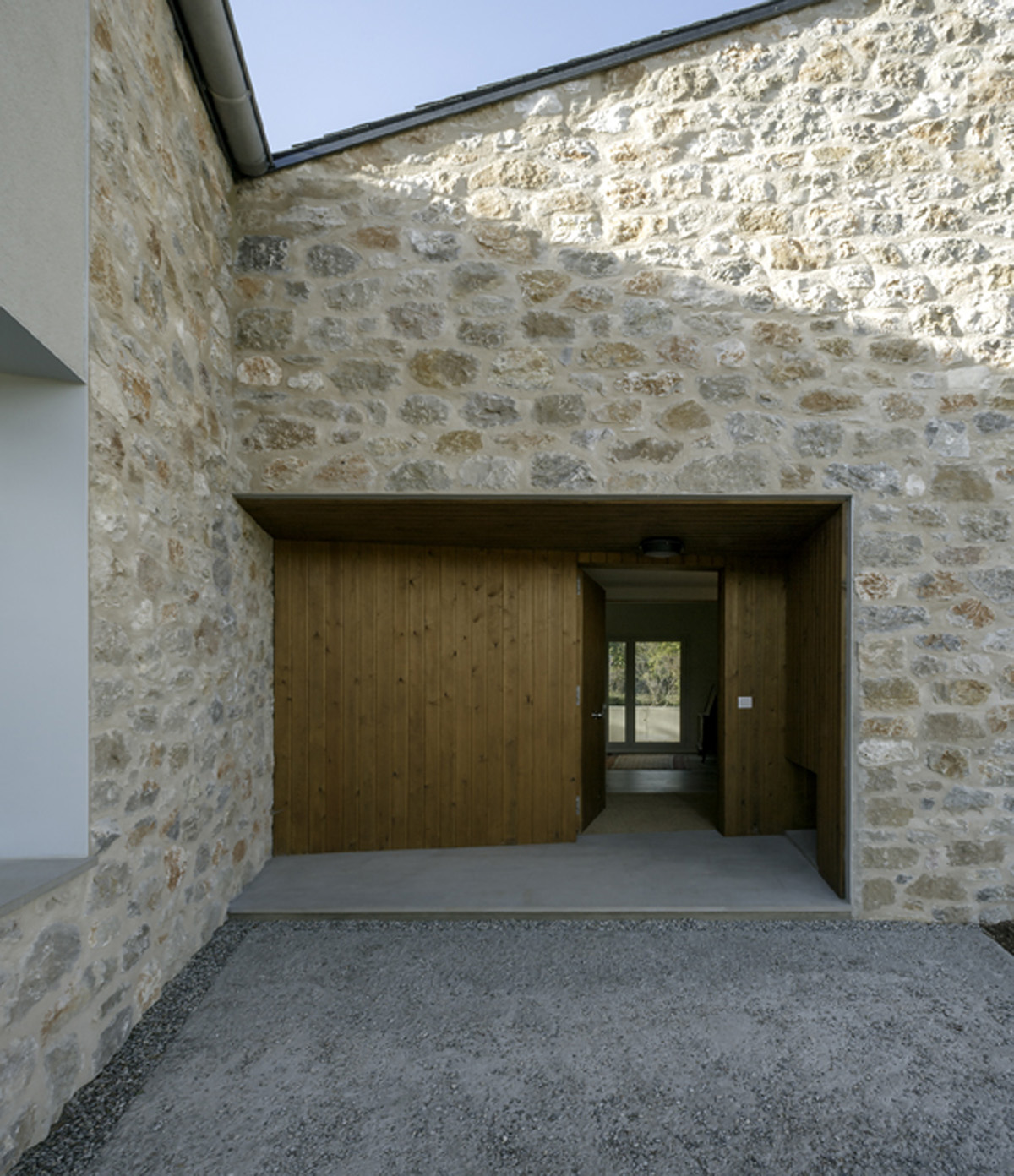

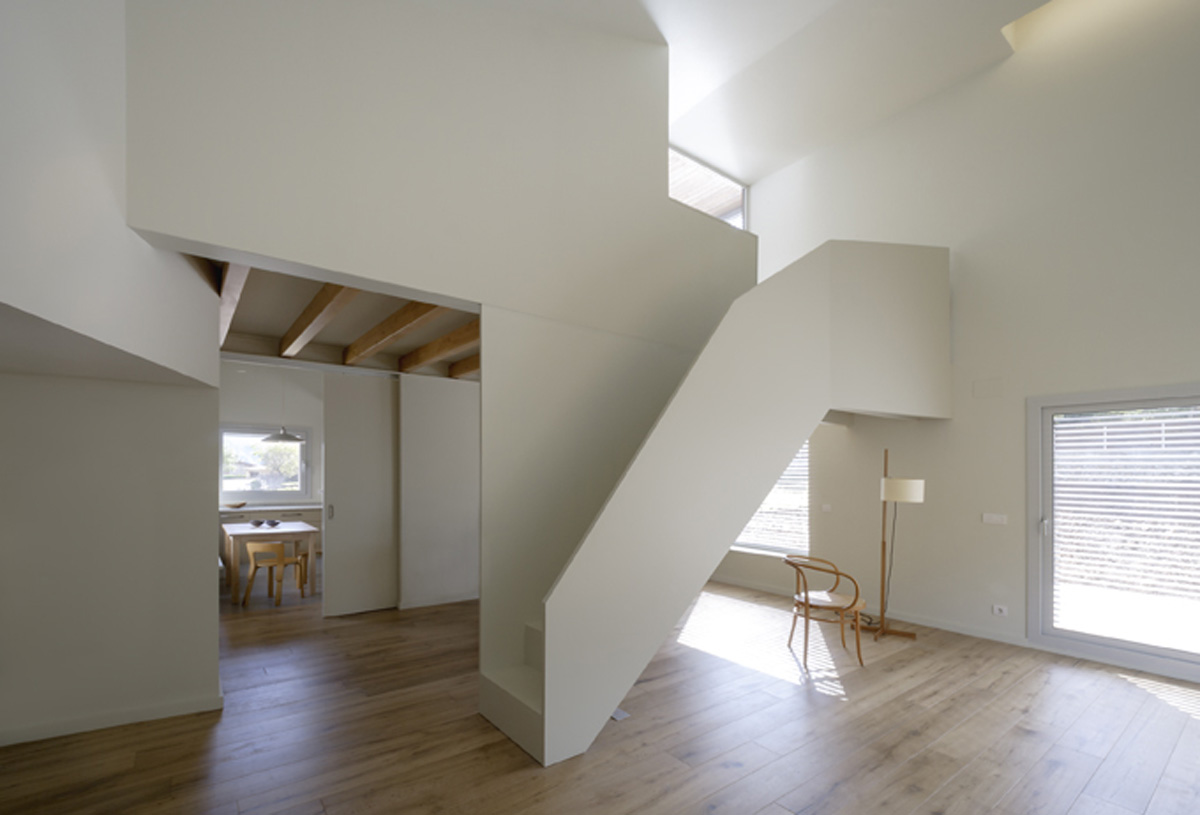
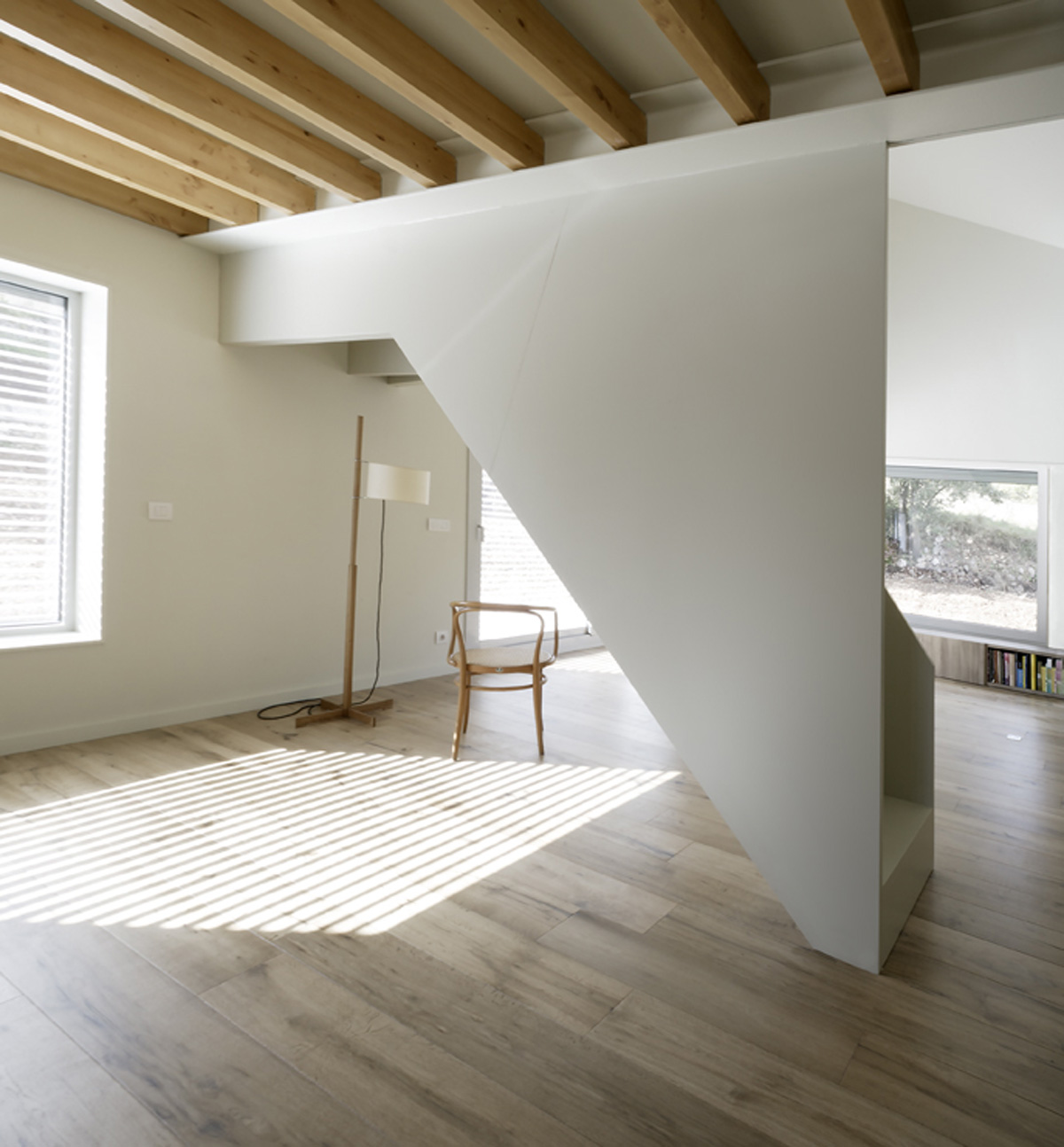
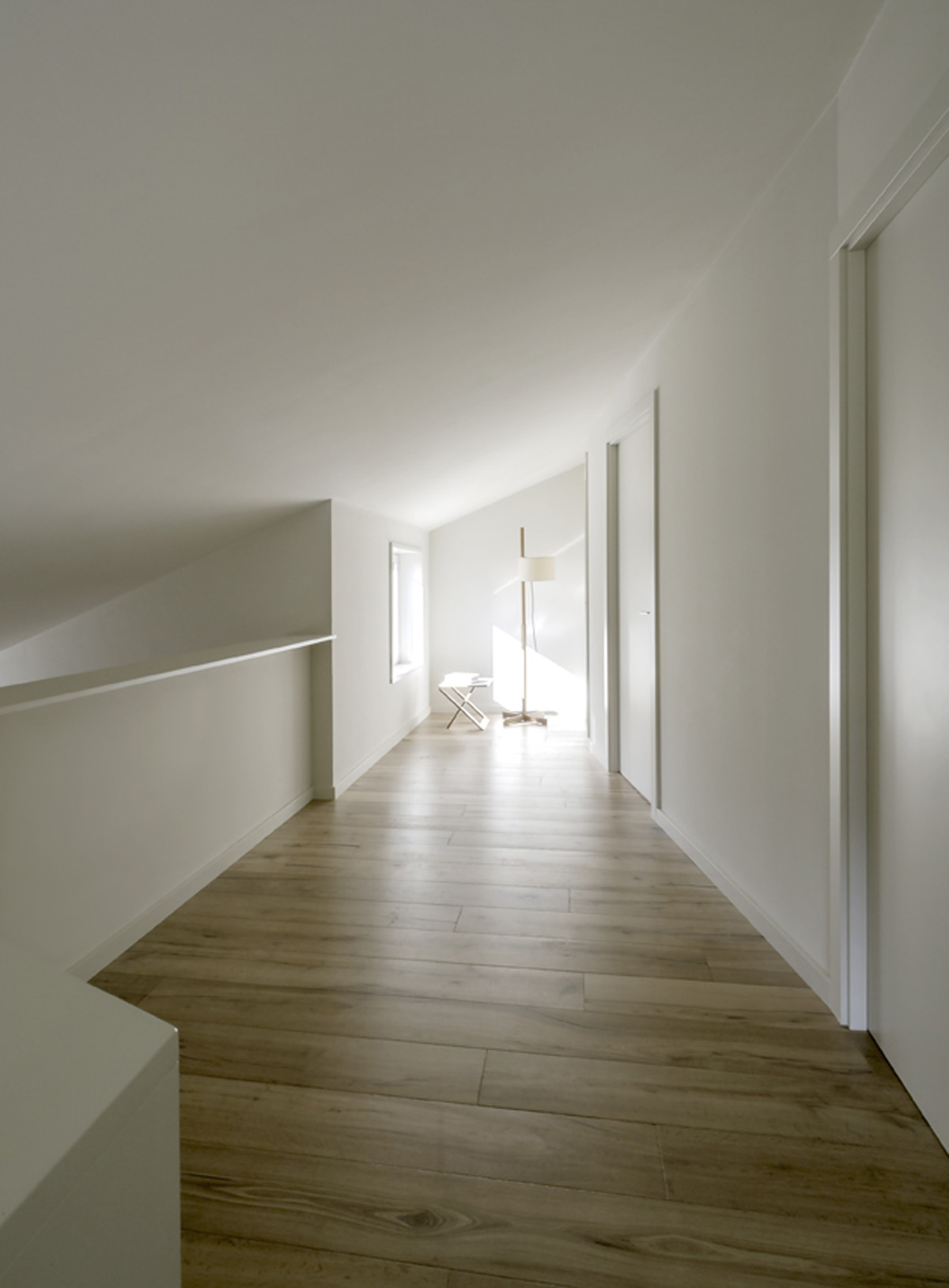
The facades that face the road and the most rugged terrain and that are exposed to the most adverse climatic conditions are walls composed of structural brick and masonry of local stone, while the more “domestic” and sunny ones are made of a high-quality waterproof stucco. flexibility. The incorporation of distinctive tongue-and-groove pinewood “canvas” in selected exterior elements, the entrance porch, balcony windows, and terraces, contributes to the compositional richness of the house.
The completion of the work, already in autumn, has not allowed the execution of the gardening works, which will add color, scale, and shade to the house. The plantation will consist mostly of deciduous trees, native shrubs, apple trees, and an organic orchard.